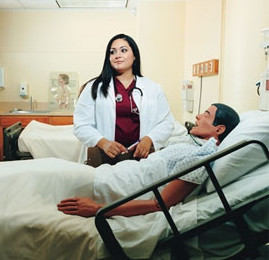My first week working in San Diego was incredible! On my first day, I was glad to know that I had a full week of orientation like most facilities. During the first day, I was introduced to the directors of all the clinics and programs. The facility was larger than I thought, with over 14 clinics in the San Diego area.
It was nice seeing that they had programs similar to the community health center in Washington. For instance, they had referral specialists, behavioral health, and care coordinators. One cool thing they have that WA didn’t are health educators. These health educators meet with your diabetic patients to set goals for their diabetes and further education. They also meet with your other patients that have high needs such as children with developmental delays and their families etc.
I was introduced to their EHR system, which was internally created. It seemed pretty straightforward to use (nothing like Meditech). It has order templates created based on the diagnosis, which is pretty neat. For example, if your diagnosis is hyperlipidemia, the order template will have the most common orders used for this diagnosis. Then you can check those orders instead of having to search for them one by one. Orders on this template include commonly used labs, referrals, medications, imaging, and patient education documents.
Another great thing about the San Diego community health center is that providers are not required to do billing or coding for the visit. There is an entire separate team that handles that. Although I do not typically mind doing the billing, it is another thing off our plate. After a provider enters all of the orders and problems, the patient is discharged to the medical assistant, in which they provide an “after visit summary”. This summary includes their diagnoses for the visit, new medications ordered, their vital signs, and any other information you wanted to add to it such as notes saying “don’t forget to drink plenty of fluids!” If you choose to order patient education documents, these are printed along with the after visit summary.
Each EHR note is in a SOAP format, in which you can drag diagnoses, orders, medications, and lab results into your SOAP note from the orders page. There is also a smart phrase section which you can store commonly used phrases. I created some phrases to include all of the ROS and Physical Exam components. I would just need to edit what is abnormal after inputting these phrases onto my SOAP note.
Similar to WA their EHR has a ‘decision aids’ tab. When the patient comes for their visit, the aids tab will tell you if they are due for a pap smear, colonoscopy, flu vaccine, HbA1c testing etc. It will even tell you the ASCVD risk factor of the patient. This tool can help you decide if a patient should be placed on a Statin for mild hyperlipidemia or not. Unfortunately, unlike WA, medical assistants do not order immunizations or rapid strep/flu testing on their own. In fact, providers even have to swab tonsils/nasal turbinates ourselves. Unlike WA, medical assistants and nurses are unable to provide lab results over the phone. Meaning I would have to call patients myself or have them make follow up appointments, which are not always a good idea since they many be unable to get an appointment in sooner than 4 weeks.
For the remainder of the week I shadowed multiple providers in various settings. It was actually pretty neat to shadow a Pediatrician, Family Nurse Practitioner, and a Physician’s Assistant. I thought about the community health center in WA, and how nice it would be if they had a pediatrician there. In comparison, the physicians appeared to be very intelligent, and I grasped that our nursing background truly enables nurse practitioners to think outside the box.
Everyone is really nice and helpful. I think it is pretty neat that lab coats are left in the clinic at the end of the week for them to be sent out for dry cleaning. The clinic is also trying to increase patient portal access. I think this is the future of medicine because it allows patients to obtain their lab results (so they can bring with them to other consultations), has patient education material based off of their problems list, and they can even submit messages to the providers (such as I need medication refills or I forgot if I was suppose to take this in the morning or at night).
Looking at my schedule for the upcoming weeks, the facility is definitely starting me off slowly. My first week I will only see 8 patients per day (PPD). The following week 12 PPD, then 16 PPD, and then finally the 20 PPD I will be seeing for the remainder of my assignment. The 20 PPD is definitely doable because each patient has a 20 min time slot and the no-show rate for the clinic is 30%.
I am actually going to be working at 3 of their clinics each week. At one clinic I will be the walk-in provider. It appears to be nice because the patients only get to have one problem addressed during this type of visit. Each clinic is different, especially because San Diego is pretty diverse, so one clinic will have a heavy Hispanic population, while another clinic has mostly Arabic patients.
Of course I was bored after the first couple of days of shadowing. So I ended up seeing a few patients under the other providers’ schedule. My first patient was deaf and had a translator with him. It was pretty neat and I was glad I was able to take my time with him.
Did the community health center in San Diego surpass my expectations? Absolutely! Is it better than the one in Washington? No, but it is pretty close! I am looking forward to working here for the next few months.


